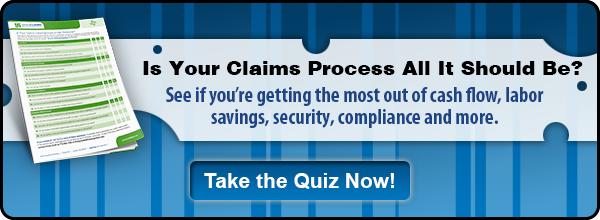What a Claims Clearinghouse should do
Before I address the topic, I think reviewing what a claims clearinghouse is and what its benefits can be to you will give context to the question of processing secondary claims. In the past, to process claims, billers completed paper forms and sent them via the Postal Service to the payer. Sounds simple, but it wasn’t and in some cases where providers are still submitting some claims in this way, it isn’t. Phone calls and error-generated resubmittals contribute to a complex, cumbersome, costly, and prolonged payment process. With electronic claims preparation and submittals, however, clearinghouses have stepped in to take over for the Postal Service with a few advantages, including claims screening and claims workflows. The software manages the flow and aggregates the claims. Clearinghouses let providers securely submit and track claims to multiple payers all in one portal. Consider it like online banking. Here are some of the advantages claims clearinghouses offer:
- Single location electronic claims management with real-time electronic claims verifications
- Smooth claims flow to payers with a significantly reduced risk of rejections - since claims clearinghouses are connected to multiple payers and understand the peculiar format and workflow requirements
- Electronic Remittance Advice (ERA) –view all payments and adjustments
- Claim Status Reports
- Rejection analysis in which the system explains error codes in English
- Edit and correct claims online anytime
- Real-time support
The benefits – simplification and speed
- Fewer denied claims and significantly higher claim success - you can catch and fix claim errors in minutes rather than days or weeks
- Rapid claims processing significantly reduces reimbursement times.
- Time savings - You can batch claims instead of submitting each one at a time.
- Reduced human-caused errors and the need to repeatedly re-key transaction data into each payer’s website
- Avoid phone call frustrations to payers
- Shorter payment cycles
- Reduction of cumbersome and expensive snail mail-related processes
How not all clearinghouses are the same
Good clearinghouses have:
- A payers list - your payers need to be on their payers lists or can get on their lists quickly
- Nationwide payer network – they must have a national reach
- Claims software exchange– clearinghouses should be able to “talk” with your billing software and have a success track record.
- A flat subscription fee instead of a module-based or a la carte menu of billable services
- Support – accessible and responsive
- Dashboard-based error reports & a control panel with an easy-to-understand and navigate interface
- Long Term Care focus - For Long Term Care providers having a clearinghouse that was built from the ground up specifically for LTC is a real advantage.
Why using a clearinghouse for secondary claims is important
For all the same advantages and benefits listed above as well as:
- Efficient secondary claims processing – a sure advantage over manual billing or going to each payer’s website to key in transaction data
- Reduction of rejected and denied claims - optical readers may not be able to correctly read the paper claim. This can be particularly stressful considering the tight timeframes in which a payer will accept claims.
- Proper processing – clearinghouses know how to process the claim
- Control – because the system simply generates the claims candidates, at the click of a button you determine which claims the clearinghouse should send. This is important, because in some cases, Medicare automatically bills the secondary payer. You don’t want to submit duplicate claims.
Conclusion
Secondary payer claims are very important to Medicare Part A providers. In some cases, a provider reported that over 80% of its Medicare Part A admissions stayed longer than the initial 20 days – a significant source of revenue and, therefore, cash. Properly processing claims through a reputable and reliable claims clearinghouse engineered for LTC providers helps to expedite that revenue-to-cash conversion.
/Prime-Care-Technologies-Logo.png?width=191&height=55&name=Prime-Care-Technologies-Logo.png)



/PCT-Trans.png)

